Preserving a Way of Life at Stone Eden Farm
I was raised in Lincoln, Virginia. It’s a little Quaker town in western Loudoun County. In 1965, when I was one year old, my father and mother took the position of caretakers of the Goose Creek Meetinghouse in Lincoln, where 57 years later they remain. We can trace our family back to the very first Quakers that settled here in the mid-1740s.
My father owned and ran a propane gas company in the county, and my mother was a floral designer. My paternal grandfather was a farmer, called a “truck farmer” back then, selling vegetables grown from his various farm plots. In retrospect, Grandaddy was too late, and too early. By the time he really got going, people had become very comfortable buying their vegetables from the new grocery store chains that arrived in the United States after World War II. Agritourism wasn’t even a word then, and Granddaddy had long since passed away when the local-food movement started. Growing up, I wanted to be a farmer but never really verbalized it. When I graduated from high school in 1983, the economics of farming were in the toilet: interest rates were 16 percent, livestock prices were at all-time lows, and the value of land had soared to an all-time high. Choosing a career in agriculture seemed like a sure path to failure.
In the early 1960s, there were over 360 dairy farms in Loudoun County. By the 1990s, they were all but gone. Today there is only one left, Dogwood Farm, run by the Potts family, a multigenerational family farm that has Quaker roots.
One of the dairy farms that turned from dairy to beef cattle was the Brown farm. It was run by Robert Brown, from another multigenerational Lincoln Quaker family. I grew up knowing and admiring “Bobby.” He is a good guy, a smart farmer, and was very active in the community. He expanded his farm enterprise in the late 1980s, which coincided with the first true development boom in western Loudoun. He fought rising land prices, increasing traffic, and a growing community that was not familiar with agriculture, and demanded a large voice in the county.
I suppose Bobby realized he was fighting a losing battle. In the mid 1990s, he and his family made the gut-wrenching decision to subdivide the farm and move to a more agriculture-friendly location. He packed up his equipment, cows, and tools, and moved to Oklahoma. That is still one of the gutsiest business moves I have ever seen.
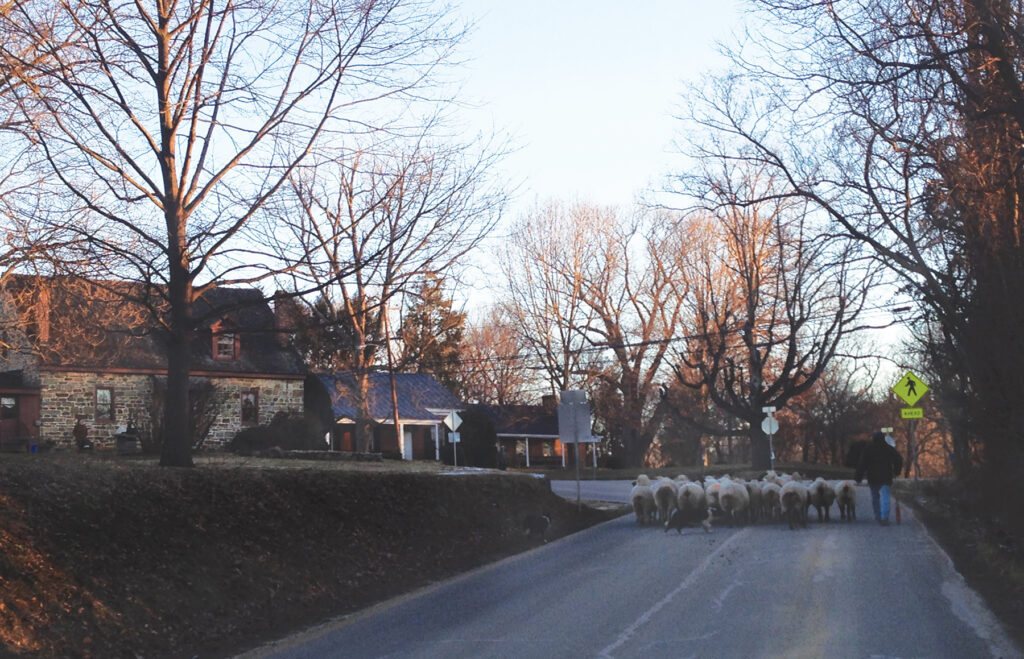
During this time, I had started my own masonry restoration business, and life was going fairly well, although I was going through some life changes. One afternoon on my way home, I drove by the Brown farm, and out in one of the fields was Bobby Brown. I was excited to see him in town, so I backed up to visit with him. We were leaning over a truck bed talking to each other, catching up, and he said to me, “You ought to buy the farmhouse.” I laughed at him and answered, “Yeah, let me write you a check.” He said, “Really, I think we can work something out.” In March of 1999, I took possession of Stone Eden Farm on just a handshake. I will forever be grateful to Bob and Carol Brown for trusting and believing in me. It was and still is a dream to own a place like this.
Stone Eden Farm was settled by the Hatcher family, and the land had been deeded by Lord Fairfax in the eighteenth century. William Hatcher was a founding member of Goose Creek Meeting. The farm remained in the Hatcher family until the Browns bought it in the early 1930s, then the Cochrans in 1999. This means that the farm has been in Quaker hands since the beginning, around 1765. For the record, Mrs. Brown named the place Stone Eden, and we (the Cochrans) are the third family to call it home.
Loudoun County has a program called “land use.” This means if you keep your land in agricultural use, you will receive a property tax break. So I mended some fences and bought 12 cows. They were okay, but I really didn’t have the facilities for cattle and eventually sold them. Meanwhile, I was going out to Montana often to visit some good friends who have a ranch. They have a band of sheep (meaning 1,000 sheep). I liked helping out, and I really liked the sheep. I fell in love with the simple facilities, and it all seemed so easy. So, in 2005, I bought my first ten ewes. The first thing I learned was raising sheep in Virginia is nothing like raising sheep in Montana: I mean, it’s like not even the same animal.
We have become disconnected from traditional methods of obtaining food and more reliant on industrial food products being trucked long distances, with all the environmental impacts that brings. We have to change the way we think about food and where it comes from.
Raising sheep is the most maddening, heartbreaking, frustrating, and difficult endeavor I have ever been engaged in. It is also the most rewarding. I think the highs are so high because the failures are so many. It’s not for the faint of heart. There’s an old sheepherder’s saying that goes, “Sheep are born looking for a place to die.” If you’re not constantly on your toes, you find it’s true.
We now have around 100 ewes; that number will typically birth 120 to 150 lambs each February. During the summer, we have just south of 250 animals to care for. It’s a handful.
Our program is like many smaller farms across the United States right now: the family’s main income is from off-farm employment. My wife is a school administrator, and I still run my restoration business. We often are categorized as a “hobby farm.” I have to be honest: it doesn’t feel like a hobby. I have to make sure that I have the correct ingredients to make the feed. I have to do the repairs on the equipment. I have to maintain the fences; I have to maintain the facilities. I have to maintain the relationships with the folks we rent additional farmland from, and with a vet and the nutritionist. I have to keep up with the soil requirements. In the summer, we make all of the hay for the winter. I have to keep the animals rotated and am always fiddling around with water. A model train set would be a much easier hobby. The farm makes almost no money, and the money it does make, it devours and demands more. A fence post ten years ago cost $6; today they are $20. Ten years ago, diesel fuel was $2.50 per gallon; today it’s $6 per gallon. Fertilizer ten years ago was $15 a hundredweight; today it’s $45. Ten years ago, lamb was $1.20 a pound; today it’s $2.50. It hasn’t kept up with inflation.
Everywhere I look there is something to do. There just aren’t enough hours in the day. On the rare days when the weather is nice and there are no sick sheep, nothing is broken, and all the work is done before dark, I have an overwhelming sense of satisfaction. Often there are several sick ewes, and sometimes there are two or three dead lambs in the feeder shed. A tractor is down, and I can’t figure out what is wrong. Maybe it has rained on some hay we have down. On those days, there is this overwhelming sense of defeat and despair. I feel like such a failure.
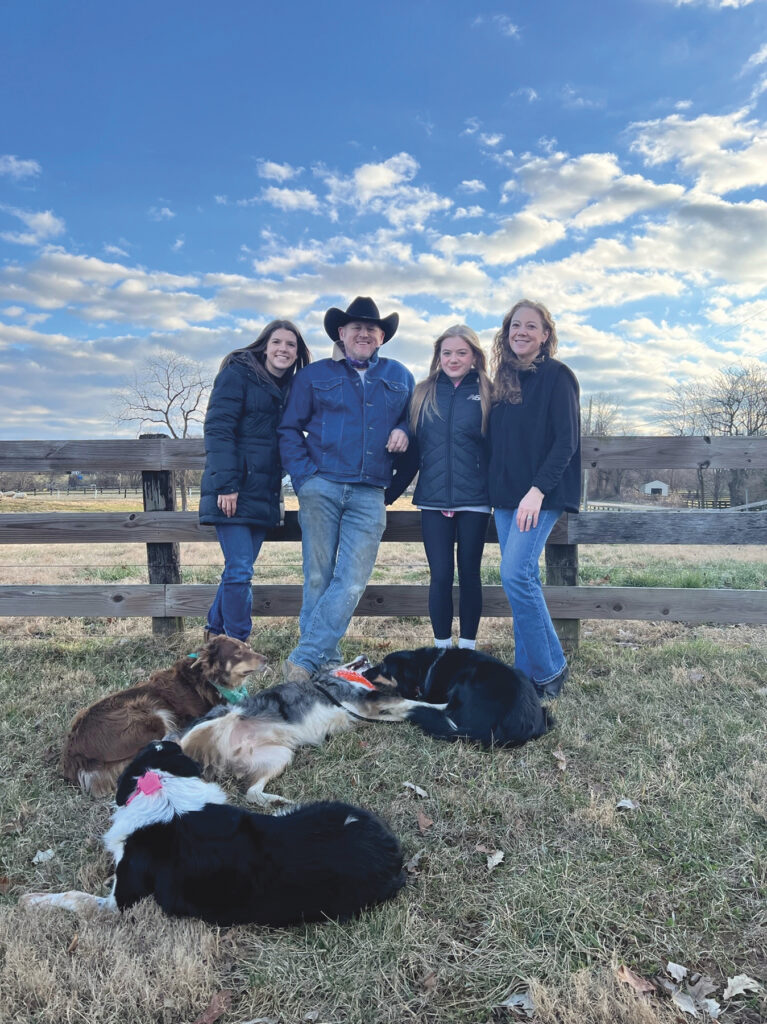
So why do I do this? There are many reasons, but chiefly it’s because it’s the lifestyle my family has elected to live. I like the fact that if my daughters go to the grocery store and get a rotisserie chicken, they know what it took to get that chicken to our supper table. It’s important to me that they understand that meat protein is not whipped up in some factory: it was an eating and breathing being. Farming is also part of my heritage; I’m just a link in a very long and old chain. In a time when agriculture is disappearing fast—at least the way we remember it—I feel almost obligated to continue it. There are so many new people in our county, I must continue to keep my past in their present: a reminder that this activity has been going on for hundreds of years on this dirt.
It’s very grounding to have your hands in the circle of life: having your hands covered in amniotic fluid as you rub a newborn lamb to get it to take its first breath of air; sitting in your truck at 2:00 a.m. to warm up a cold lamb, holding it close to you and trying to get it to take a bottle; carrying a bucket of feed in each hand to feed hungry ewes in the snow; crumbling dirt in your hands, inspecting it for worms and organic matter; gathering raked hay in your hands and twisting it to see if it’s ready to bale; rubbing your hands over the rams to check for body condition before they are turned in with the ewes again; and then one day, when the time is right, walking into the barn with a pistol and sharp knife in your hands to harvest that lamb with the same love, care, and respect you’ve given it over the last eight months. It’s the exact same circle that has been turning since sheep were domesticated 10,000 years ago. I’m just a link.
I don’t know what the future of agriculture is. I don’t know what is in store for Lincoln. I don’t know when I will be handed my last glass of water. But I know with complete certainty: the Lord is my shepherd, and I shall not want.
Something else that has come with keeping sheep, something I could have never anticipated, is the community support. In 17 years of having sheep, we have never had a complaint. Folks just love to see them in the fields, and when there are lambs with them, I worry about traffic accidents because people will stop their cars in the middle of the road and look. It’s much more than cattle, and I really don’t know what “it” is.
Through the fall, we rotate the sheep to different pastures, finally ending up with the ewes all together at a little farm we have rented about a mile and a half away from home. The first Saturday in January, we all walk the sheep home to get ready for lambing. Our family and a couple of border collies march them right through Lincoln, past the meetinghouse and home. It’s become a regular event for folks. I think last year there were close to 100 people watching. It normally makes the local paper, and someone will always post something on social media, and it takes off. I think people like it for different reasons. For the newer people, it’s very novel to have something like this happening to prove that they really do live in the country. For folks who have been around here for a long time, I think it’s a reminder that there still is a bit of agriculture going on. And still others might think it’s like living in the old country, like Scotland or Ireland.
Agriculture is in a very precarious position. There are many facts that we must face and work together as a country and global community to address. By 2050, we will have to feed twice as many people in the world as we do now. The average age of the American farmer is 62. It’s a little younger for the world farmer but not by much. Our current methods and use of herbicides, insecticides, and fossil fuel-based fertilizers are not a sustainable system for long-term food production. We are killing our dirt. We have to find practical ways to adapt to climate change. But most importantly, we must wean ourselves away from the overabundance of cheap food.
We would be wise to look behind us, and not too far back either: just a generation or so. Most of the food was very local. People personally knew who raised their pork, beef, and chicken. They knew exactly where their milk, butter, and cream came from. We have become disconnected from traditional methods of obtaining food and more reliant on industrial food products being trucked long distances, with all the environmental impacts that brings. We have to change the way we think about food and where it comes from.
After his first job as a cobbler, George Fox worked as a wool and cattle buyer. And I recall reading somewhere that he said everyone should keep sheep and cattle for a time. But now I can’t find it. So if he didn’t say it, he should have because it’s an absolute truth. Having experienced this kind of work, your understanding of the Scriptures becomes very vivid and practical. You understand every connotation with complete clarity when the psalmist says, “He leads by the still waters,” and you know exactly why the shepherd will leave the 99 to go find the one.
I don’t know what the future of agriculture is. I don’t know what is in store for Lincoln. I don’t know when I will be handed my last glass of water. But I know with complete certainty: the Lord is my shepherd, and I shall not want.


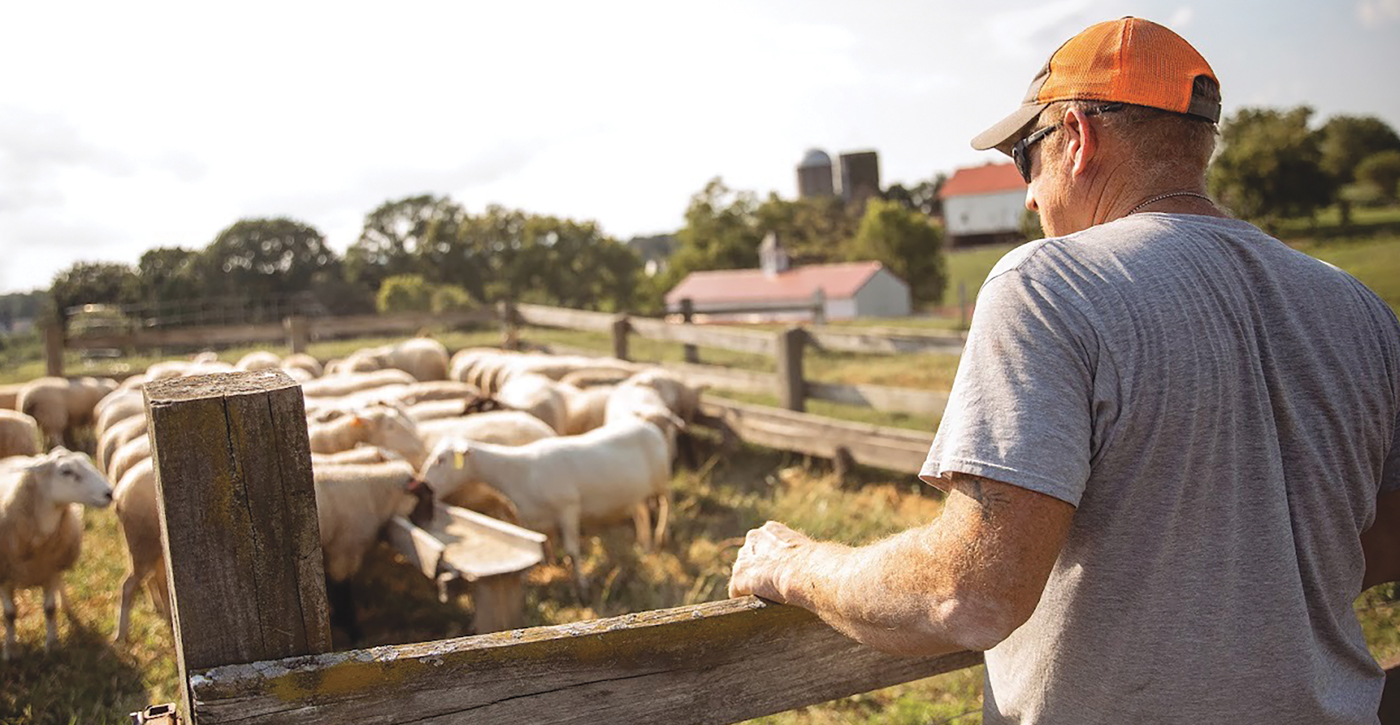
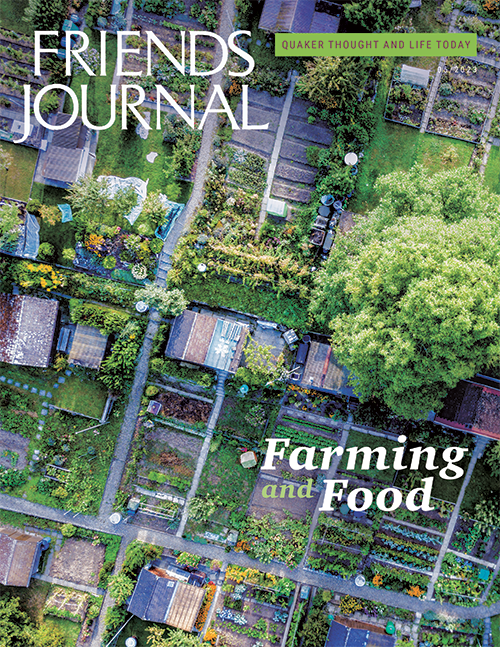
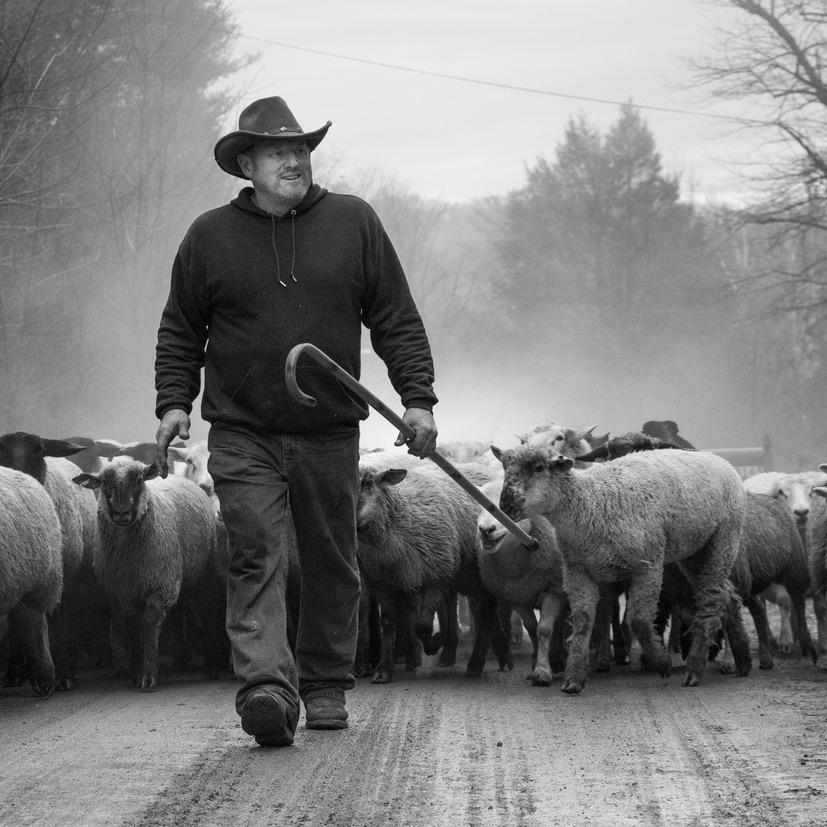
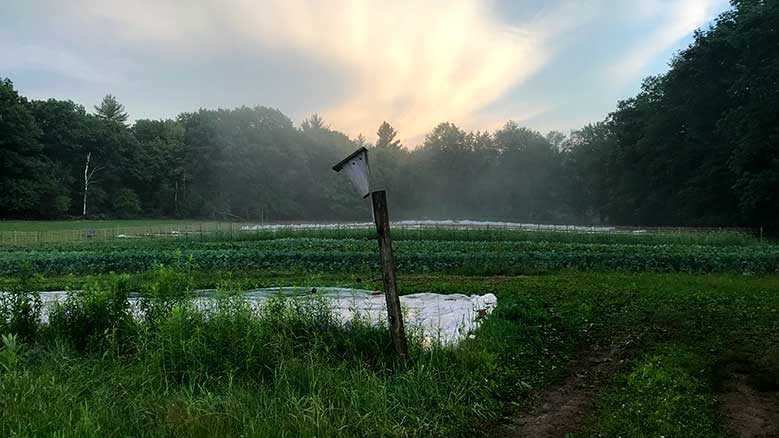
Allen Cochran’s article, The Lord is My Shepherd, is inspirational. No one said farm work is easy. His description of the highs and lows of farming is “dead on.” Our job as Quakers is to find our way to God. In the process, we learn that the unconditional nature of God’s love is something we can share with family and friends and with the earth space we occupy, and in the work we do to earn our daily bread. The acronym FAITH (Forsaking All I Trust Him) may seem simplistic but is as comfortable to remember as SPICES (Simplicity Peace Integrity Community Equality Stewardship of the Environment). Stone Eden Farm under the care of the Cochran family is exemplary of a Quaker family putting faith into practice.
I cannot recommend enough this book for further information on the subject. https://books.google.com/books/about/A_Shepherd_Looks_at_Psalm_23.html?id=QHbTGr3SAIUC